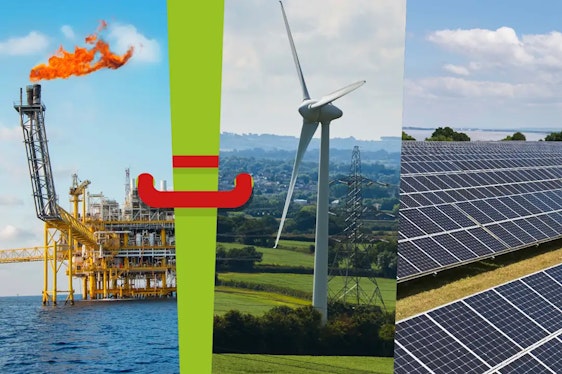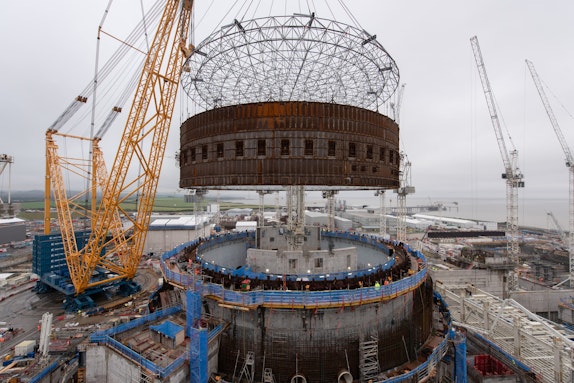
Breaking the Link Between Fossil Fuel and Renewables
High energy bills persist because our market ties green energy prices to fossil gas costs. Breaking this link could finally deliver cheaper, fairer, stable electricity.
In response to rocketing gas prices after Russia’s invasion of Ukraine, Boris Johnson’s government set a target: 600,000 heat pumps a year. They offered grants of £6,500 (now £7,500) to help people with the cost. Decarbonising our homes and cutting ties with petro-dictators like Putin -good idea. But the scheme itself? A complete flop. Only 55,000 heat pumps were installed in 2023, despite £450 million set aside for grants. At this rate, it’ll take 200 years to hit the yearly target.
First, the cost. Even with a £7,500 grant, British Gas customers paid an average of £5,690 to install an air-source heat pump in 2023 - at least £2,000 more than a gas boiler. And who’s benefiting from these grants? Not those who need them most. The government’s own data shows payouts flowing disproportionately to wealthier regions - people who could probably afford the upgrade without a handout. Meanwhile, poorer areas - the ones most in need of help - are left out.
Then there’s efficiency. Heat pumps run at lower temperatures than boilers, so you need big radiators or underfloor heating, and, crucially, proper insulation. Without it, you’ll just burn through expensive electricity - about four times the cost of gas. And guess what? Our homes are some of the draughtiest in Europe—losing heat up to three times faster than those in Germany.
So, what’s the government’s solution? Drop the insulation requirement for grants. Sure, it makes installation cheaper upfront - but it also guarantees higher bills down the line. Without insulation, heat pumps will struggle to reach the efficiency needed to outcompete gas boilers.
The numbers don’t lie: to beat gas on cost, heat pumps need a Co-efficient of Performance (COP) of 3.5 - meaning 3.5 units of heat for every unit of electricity. But in the real world? The government’s research shows an average COP of just 2.94. So much for those flashy manufacturer claims...
Even if homes were ready for heat pumps, the power grid isn’t. Adding 600,000 heat pumps a year would demand massive grid upgrades - transformers, storage capacity, and more. The price tag? Hundreds of billions. But let’s pause - who’s actually going to install them?
As of October 2024, the UK had only 5,000 certified heat pump installers. The industry says we need 33,700. And that’s just for the pumps - never mind the legions of workers needed to retrofit insulation, upgrade radiators, or rebuild local grid infrastructure.
Then there’s the simple fact that some homes just aren’t suited for heat pumps. Think terraced houses with no garden, high-rise flats, or homes with no space for the chunky external units. And if you think neighbours won’t complain about the noise... you’d be wrong. Heat pumps hum - and when that hum carries through thin walls or over shared spaces, it causes rows.
We’re in a climate and ecology emergency - time to act pragmatically. Heat pumps can be part of the answer. But they’re not the answer - especially not for homes that aren’t suitable. Instead of forcing a one-size-fits-all approach, let’s back something that works with the homes - and the infrastructure - we’ve already got.
That’s where green gas comes in. Made from biodiverse grasslands grown and harvested for anaerobic digestion, green gas is a clean, renewable fuel that slots straight into the gas network we’ve used for over a century. No ripping out radiators, no drilling through walls - just low-carbon energy from grass.
And it’s not just good for the climate - it’s good for nature, too. Those biodiverse grasslands pull carbon from the air, restore soil health, and create habitats for wildlife. When harvested and processed, they give us low-carbon gas - ready to heat homes using the boilers and pipes we already have.
No pipework rip-outs. No huge bills for radiators or underfloor heating. No grid overhaul costing billions. Just homegrown energy. Cleaner, greener, and ready to roll.
The heat pump programme has been all ambition and no plan. Green gas is different—it’s practical, it’s scalable, and it’s almost ready to go.
So, what’s the hold-up? Let’s get on with it… :)
High energy bills persist because our market ties green energy prices to fossil gas costs. Breaking this link could finally deliver cheaper, fairer, stable electricity.
Sizewell C is an overpriced, delayed, and risky nuclear project we don’t need. Renewables are faster, cheaper, and safer—yet households will pay billions for Sizewell before it even generates electricity.
Salmon farming is a toxic, unsustainable mess—polluting oceans, killing wild fish, and fueling disease. It’s time to shut it down before it wipes out marine ecosystems for good.
Forest Green Rovers is the world’s greenest football club - powered by clean energy, serving vegan food, and tackling transport emissions. Now, we’re building Eco Park, a stadium that will set new sustainability standards.


